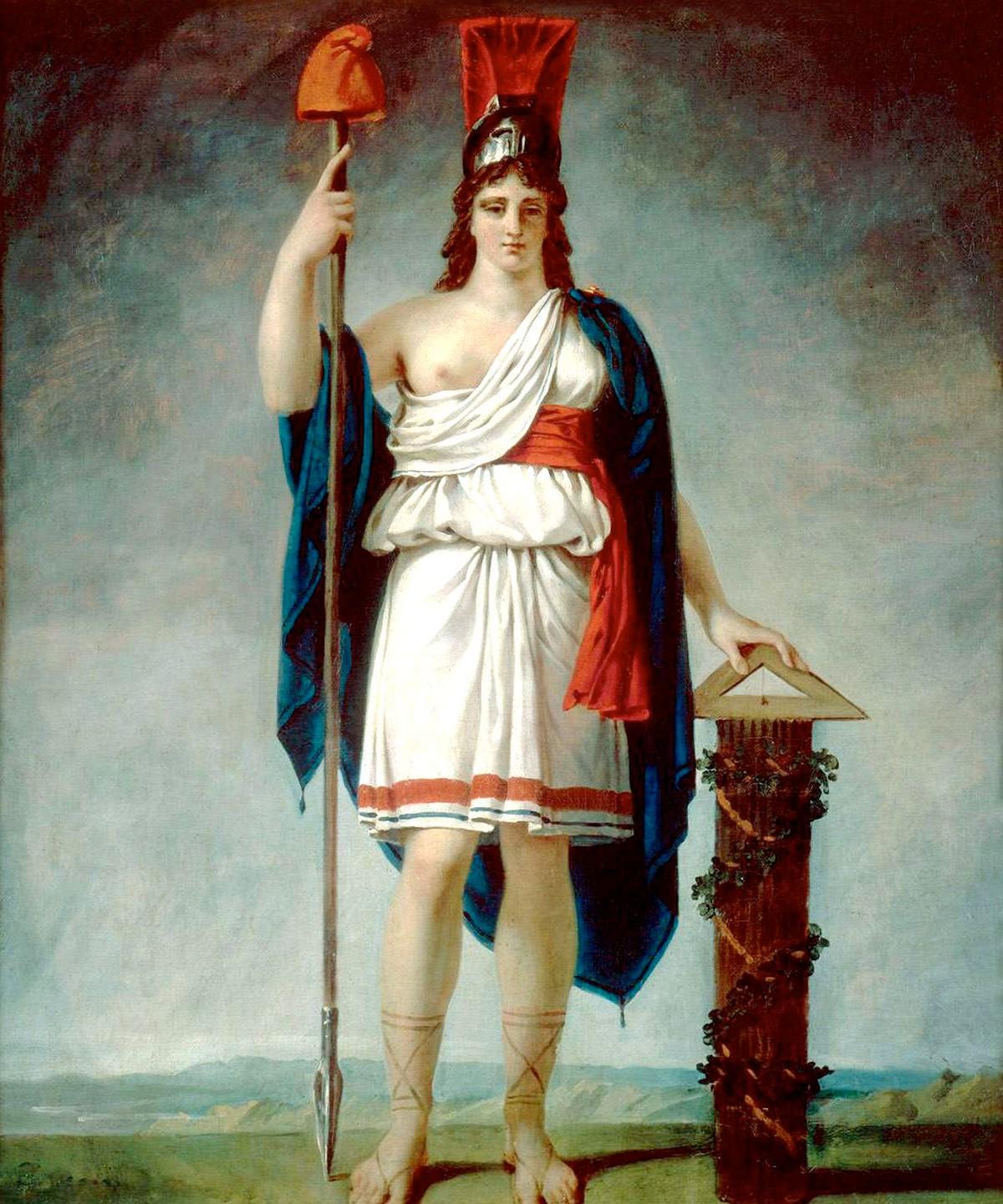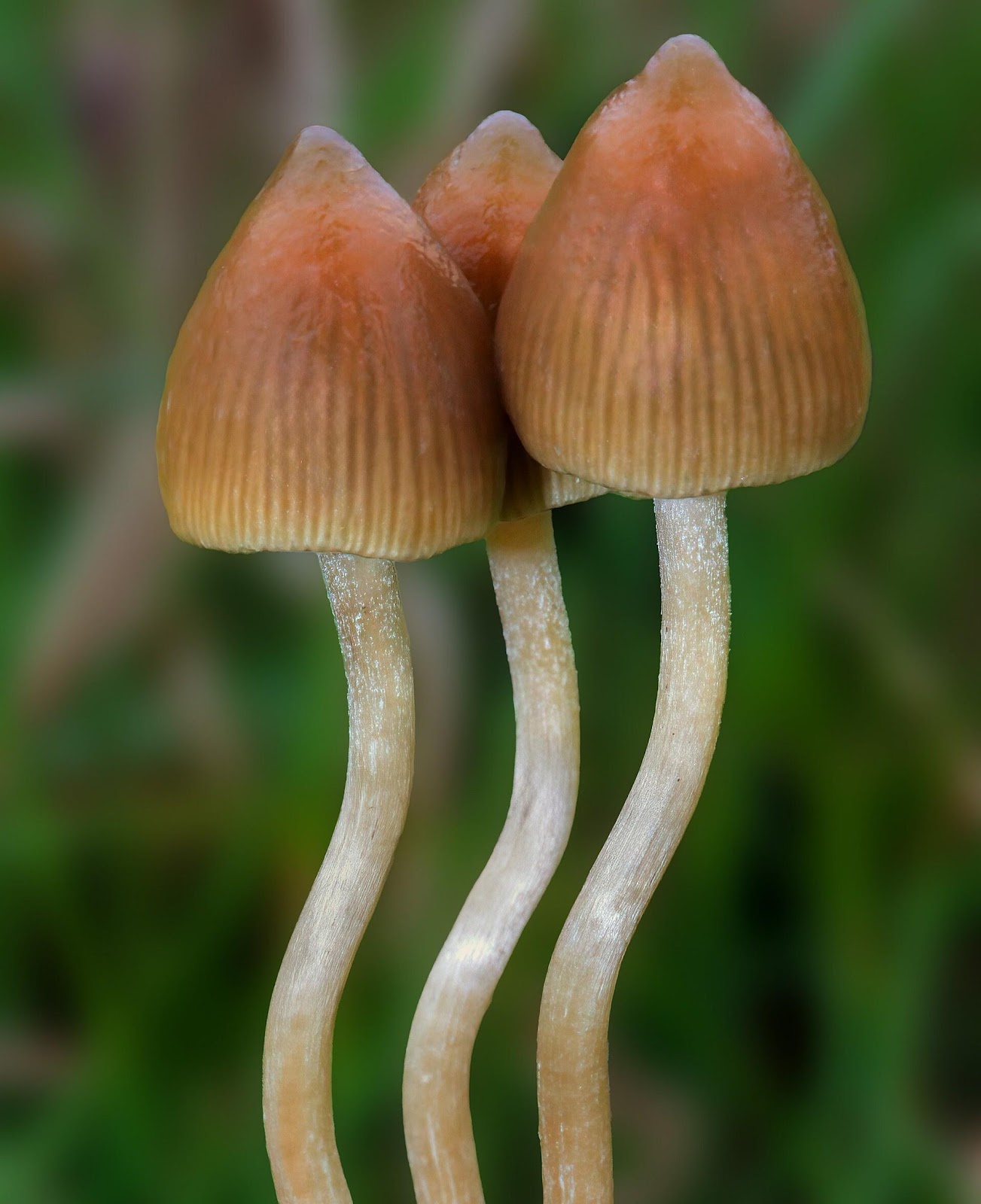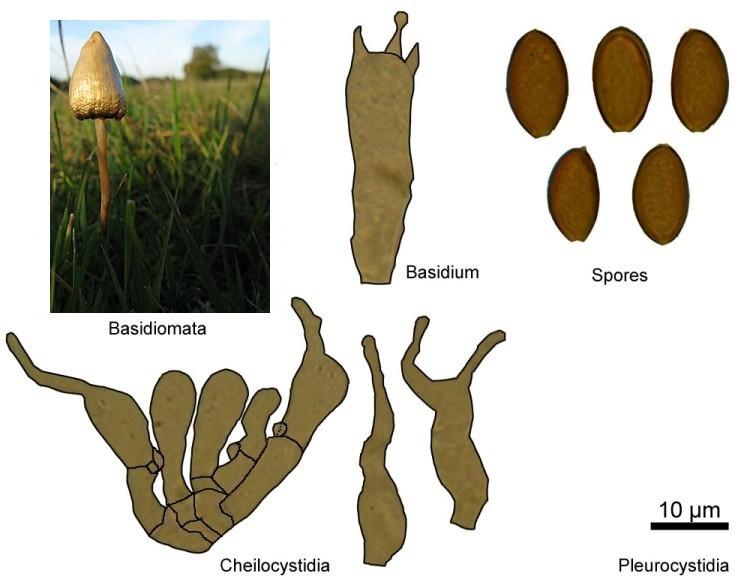The Liberty cap is most common in the Pacific Northwest but is widely distributed throughout North America during the fall and early winter months. Mushroom foragers flock to the countryside of the PNW to stock up on the delectable mushrooms where they grow in grassy fields. The mushroom is Saprobic which means the mushroom feeds on organic matter low in oxygen, this strain is responsible for cycling nutrients and decomposing organic matter in nature. To date, no one has successfully grown mature liberty caps in an indoor environment. It is theorized that Pislocybe Semilanceata has a unique relationship with a particular bacteria present in grassy soil.
Why do they call them Liberty Caps?
The term liberty caps originates from the Roman Empire. Libertas, a Roman goddess is portrayed with a spear in her hand that appears to have a conical cap called a pileus on the top of her spear. The pileus is a felt cap and is often referred to as a symbol of freedom and not being a slave. When spaces were freed they were given freedom as citizens dating back to when Julius Caesar was ruler in 44 BCE. ( Cf. Appian, Civil Wars 2:119:) The mushroom gets its name because of its striking resemblance to the Phrygian Cap aka Liberty Cap.
The mushroom gets its common name from its resemblance to the Phrygian cap.

The Pileus felt cap resembles the P. Semilanceata

Liberty Cap photo by Alan Rockerfeller
The Liberty Cap large cent was minted in 1793. This art depicts the striking similarity to the psychedelic mushroom that was scientifically classified in Northern Europe. The Term Semilanceata translates to “Half Spear shaped” and Psilocybe “Smooth Head” so together Psilocybe Semilanceata means Smooth headed half spear.

The geographic habitats are widely distributed for Liberty caps, although they are most prevalent in the northern hemisphere in temperate climates along moist grassy fields during autumn months. Gaston Guzman, an infamous mycologist claimed in 1983 that Psilocybe Semilanceata is the most widely distributed psilocybin mushroom species reported in 18 different countries.
Physical Characteristics:

The Phrygian cap: This symbol of liberty referred to as the liberty cap originates from the region of Phrygia in Anatolia (Turkey). The use of this symbol dates back to ancient Egypt.
- Conical/bell-shaped cap measuring approximately 2.5 cm in diameter.
- Generally testing around 1% active psilocybin content.
- Bruises blue readily.
- Veil: evanescent, thin partial medium.
- Spores: purple-brown measuring anywhere from 7-14 microns.
- Chrysocystidia absent on gills.
A common look-alike for Liberty caps.
The most dangerous look-alike for P. Semilanceata aka Liberty Cap is the deadly Galerina mushroom others include the sp. Mycena, Inocybe, and conocybe. If you are interested in foraging your own liberty caps check out how @he_grows distinguishes between real and foe in the United Kingdom.
(Click the link below to see the look-alike mushrooms and key visual differences.)
The pellicle of a mushroom is a thin transparent layer of gelatinous material. This is a great way to identify particular mushrooms like the liberty cap and a common psilocybin look alike Psilocybe Pelliculosa. By pulling apart the cap you will see the clear stretchy layer of natural contact lens while the specimen is picked fresh and still hydrated you can see the pellicle of liberty caps.
Pellicle: separable gelatinous membrane on the pileus of a mushroom)
Pellicle of various psilocybin mushrooms
- P. Azurescen: difficult to remove
- P. Cyanescen: difficult to remove
- P. Semilanceta: easy to remove
- P. Pelliculosa: easy to remove
How to remove the pellicle of the shroom
(Pellicle: separable gelatinous membrane on the pileus of a mushroom)

